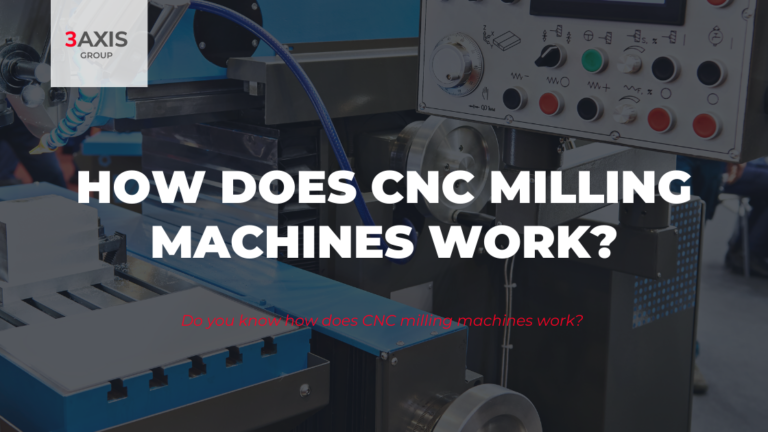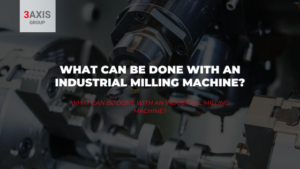Do you know how does CNC milling machines work? In this post we reveal everything you need to know.
- We will explain what a CNC milling machine is and its components.
- We will discuss how does CNC milling works step by step.
Read it to the end and find out how it works – don’t miss it!
What is a CNC milling?
The CNC milling machine is designed to produce parts with millimeter accuracy. This type of milling machine has the Computer Numerical Control (CNC) system, by which, through the computer, you can program it to cut, draw or sand, besides many other functions.
As with other machines that are handled by Computer Numerical Control, CNC milling machines are an upgrade of conventional milling machines. That is why it shares the same moving parts as a conventional milling machine.
However, they don’t have levers or cranks to operate these moving parts, but rather a screen inserted in a panel full of controls and a metal box that contains the electrical and electronic components that regulate the operation of motors designed to do the same job as the levers and cranks of the old machines.
Among these components is the CNC, which is a computer mainly responsible for the milling machine’s movements through the corresponding software.
In the following list we will show the components of a basic model of CNC milling machine, where the last three elements are exclusive of the CNC models.
- Column
- Workpiece
- Mill
- Milling table
- Cutting head with spindle motor included
- CNC control panel
- Coolant liquid pipes
How does CNC milling work? Discover all the steps.
Industries that commonly use CNC milling machines include automotive (design of engine blocks, molds and various components), aerospace (aircraft turbines) and electronics (mold making and prototyping), in addition to those involved in the manufacture of machinery, instrumentation and electrical components.
The reason is simple, CNC milling machines are specially adapted for milling profiles, cavities, surface contours and die cutting operations, where two or three axes of the milling table must be controlled simultaneously. So, how does CNC milling machines work?
We tell you about it below, keep reading!
STEP 1: Preparation
First of all, make sure the machine is equipped with the correct tools to perform the job and the raw material is secured in place with a vice. Once these preparations are completed, the operator will start with entering the manufacturing instructions into software.
STEP 2: CNC Process
The primary function of the CNC is to control the movements of the table, cross and longitudinal slides and/or the spindle along their respective axes by using numerical data.
This rigorous control is carried out by software supplied with the machine, based on one of the CNC numerical programming languages, such as HEIDENHAIN or FANUC.
Nowadays, the use of CAD (computer-aided design) and CAM (computer-aided manufacturing) programs is an almost essential complement to any CNC machine, so that, generally, the manufacture of a part involves the combination of three types of software:
- CAD: performs the design of the part.
- CAM: calculates the axis displacements for the machining of the part and adds the feed rates, rotational speeds and different cutting tools.
- CNC Control (included with the machine): receives the instructions from the CAM and executes the movement orders of the moving parts of the milling machine according to these instructions.
STEP 3: CNC Milling Machine Ready
When the CNC Milling process begins, the tools spin at thousands of RPM – enabling them to cut through materials with ease. The table will then rotate on several axis to shape the raw material according to the given instructions.
Discover our Marketplace and find out the CNC milling machine that best suits you.




